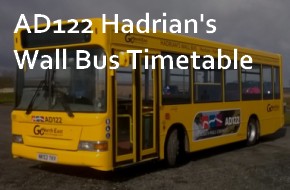Soldiers and Settlements
The regiments based in the forts of Hadrian's Wall indicate their origin - Spain, France, the Netherlands, Belgium, Germany and even further afield. Yet once based in Britain, these units tended to recruit locally, though some soldiers from northern France, Germany and elsewhere continued to join the British army. Each unit contained infantry or cavalry or both, nominally either 1000 or 500 strong, though surviving documents suggest that many units were probably below strength. In the fourth century unit strength was much smaller. A Roman fort obviously contained many barracks-blocks. In addition, there was a headquarters building, a large house for the commander and his family, a workshop, store buildings, granaries, and often a hospital. The bath-house normally lay outside the fort. This contained a latrine and there was also usually one in the fort. The fort was surrounded by a stone wall or turf rampart and two or more ditches. usually four gates provided access, sometimes each gate containing two portals.
Civilians on Hadrian's Wall
Roman forts on Hadrian's Wall and elsewhere were the focus of attention by civilians. Settlements sprang up outside the forts. There is little evidence for these in the earliest years of the Wall, but from the later second century more information is available. geoophysical survey has demonstrated that many civil settlements were larger than the forts to which they were attached, though the buildings revealed in this way are undated. Buidlings spread along the defences of forts and beside the roads leading away from the forts. Some settlements were defined by banks and ditches but whether these were defensive is not clear. It is assumed that the soldiers' wives and families lived here rather than in the forts. Beside their houses, there would have been shops and workshops, inns and taverns, temples and brothels. Beyond the fort and the civil settlement lay the cemeteries for both soldiers and civilians. Little is known of these on Hadrian's Wall. The normal form was cremation, though from the third century burial became more common. The forts and cicil settlements were linked by roads. Milestones were erected long these roads. Two of the places from which distances were measured were Carlisle and Corbridge.


.gif)


 button to add an item to your Itinerary basket.
button to add an item to your Itinerary basket.
